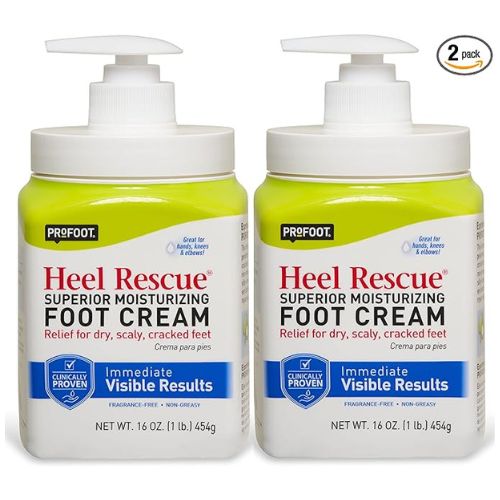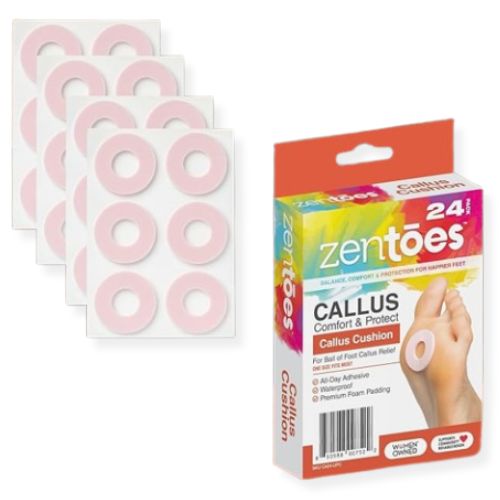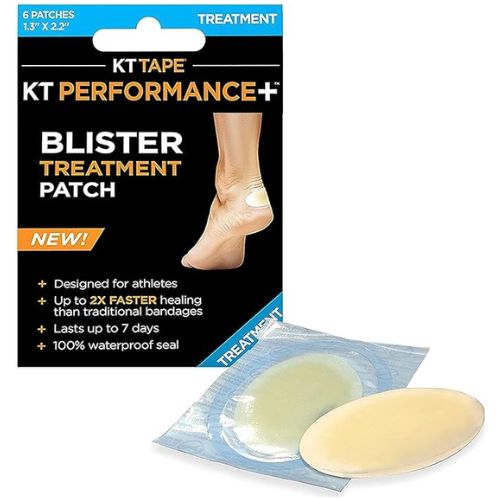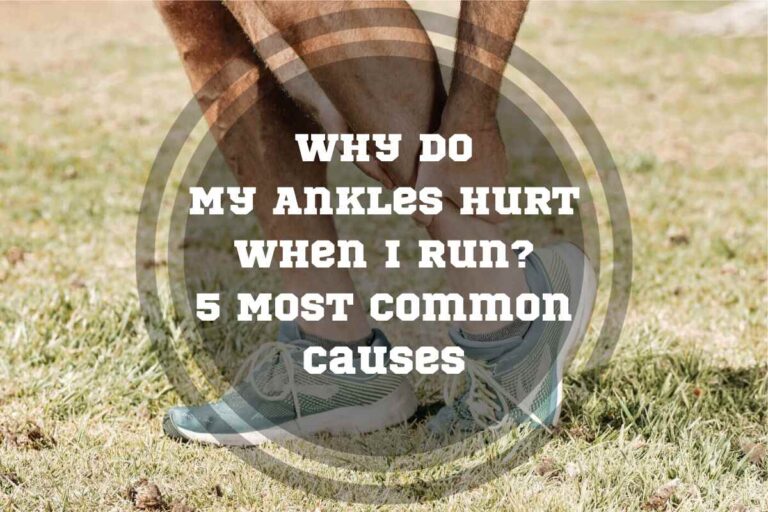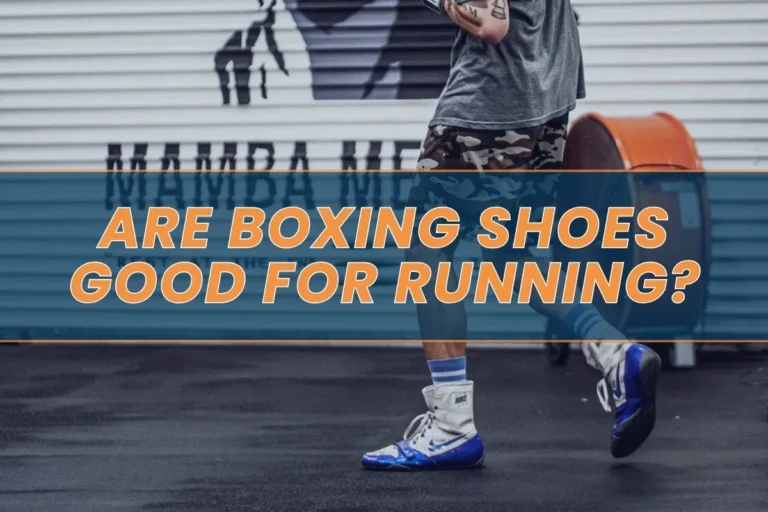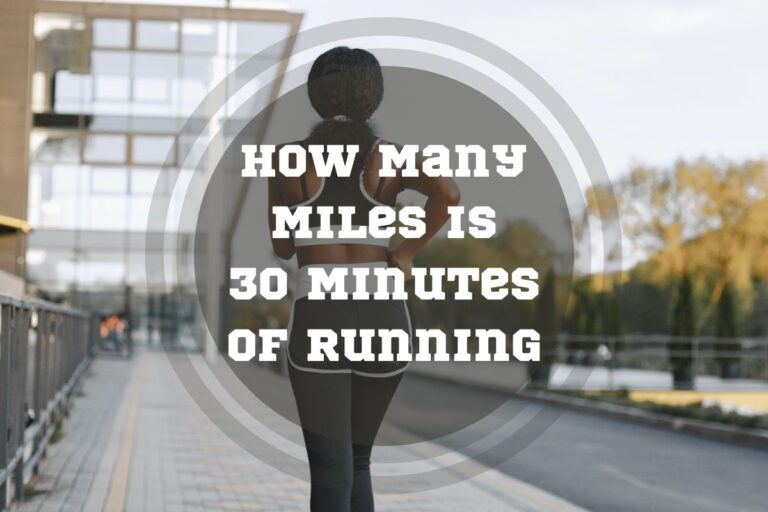Are Calluses Good for Running? The Foot’s Natural Armor
Are calluses good for running, or anything for that matter? In all honesty, they’re a double-edged sword because, although the thickened skin can offer some protection against friction, untreated calluses can cause problems. A lot of people will tell you to leave your calluses if they don’t bother you, but if you do, they can cause corns and inflammations over time.
If you’re a runner, a callus might seem like a badge of honor, but don’t let it go too far. You don’t have to scrub your foot like a maniac to get rid of it, but if you at least maintain it and prevent it from going further, you’ll save yourself from a lot of pain and frustration.
We’ll get into all the ways you can prevent and treat calluses, so let’s not beat about the bush any longer. Grab a moisturizer, sit back and see should you remove calluses and how to handle them!
Are calluses good for running?
Calluses can be a natural way to protect your feet against friction and pressure during running, but if not managed or if they’re excessive, they will cause discomfort and even issues with your gait.

5 Causes of Calluses in Runners
As you lace up your shoes and hit the pavement, your feet are under a decent amount of stress and they get battle scars in the form of calluses. Usually, you’ll notice them in your plantar surface (which is the underside of your foot), toes and ball of the foot, and your heel. There are a lot of reasons for a callus from running to appear, so let’s see which are the most common.
1. Friction From Shoes That Don’t Fit
A lot of people underestimate the importance of proper footwear (meaning, running shoes of correct size), and their feet punish them for it. Calluses are one of the ways your feet will show you that whatever you’re wearing isn’t right because your skin will rub against the shoe. If this friction is constant, your skin will try to defend itself by thickening.
2. Constant Pressure and Impact
Your feet constantly pounding on a hard surface during running will generate pressure on specific points. This pressure will trigger your skin’s natural protective mechanism, which will result in calluses (over time).
3. Improper Running Form
If you run with an incorrect gait or stride, the pressure won’t be distributed evenly across your feet. This uneven stress will prompt calluses to form as a response to localized pressure points.
4. Excessive Mileage or Intensity
You should never push your body beyond its limits because it will return the favor. Overtraining will lead to increased friction and pressure on your feet, and what’s the result of this heightened stress? You guessed it – it’s calluses.
5. Inadequate Moisture or Lubrication
If your skin is already dry and cracked, it will be more prone to issues caused by friction when you start running, so keep those feet moisturized. You can use a regular hand cream (just make sure you use the really rich kind for dry skin), or you can buy a cream made specifically for feet. Good old Vaseline will do the trick, too, especially if you apply a generous layer, put out some cotton socks on and let it sit for an hour or two (during your run, however, make sure you use synthetic socks that wick away moisture). If you already have problems with super dry, flaky skin, salicylic acid can help you get rid of it. Just make sure to moisturize afterwards.
6 Symptoms of Calluses While Running
How do you know you have calluses? Well, there’s quite a few symptoms and if you really pay attention to your feet, there’s no way you’ll miss them. There’s a way to address each symptom, but for that to happen, you need to know how to recognize them.
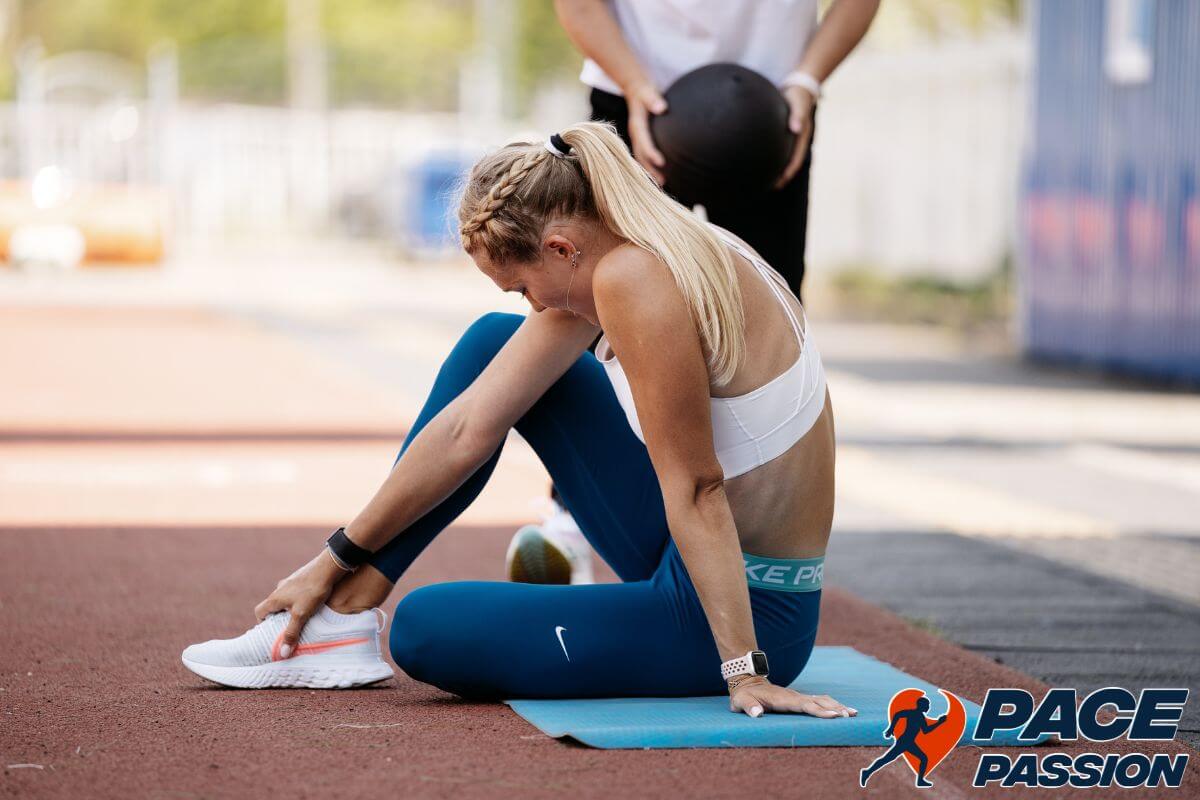
1. Thick Skin in Specific Areas
One of the most common symptoms of runners feet calluses is your skin getting thick in certain areas of your feet. This is how your body responds to repetitive friction and pressure during running – it creates a protective barrier.
2. Pain or Discomfort
You probably won’t feel it all the time, but you might feel some discomfort or pain during running or walking. You can even feel discomfort on the running callus side of your big toe, especially if you’ve had a long run. This is because the thickened skin presses against underlying tissues and leads to soreness and tenderness.
3. Hardened Patches
You will probably notice patches of hard skin on the soles, heels, or any other areas of your feet. The patches vary in size and texture, but those that are bigger and really rough mean that the foot callus from running has been here for quite some time.
4. Changes in Foot Texture
If you have a callus, you’ll be able to feel it just by running your fingers across your foot. The callus is tougher and rougher compared to the surrounding area, and you’ll definitely feel that difference.
5. Fissures or Cracks
In some cases, calluses will result in you developing small fissures or cracks on the skin. This is usually painful, and it can make your skin more prone to infections if you leave it untreated.
6. Redness or Inflammation
Constant friction and pressure that causes calluses could also result in localized redness and inflammation. This is especially noticeable after a run because the affected area will respond to the stress endured during running.
Subscribe to Our Running Newsletter!
Get free running tips from renowned professional athletes and discounts from top-notch brands.
Our Recommendations for the Prevention and Treatment of Calluses for Runners
We’ve covered the symptoms, so it’s only fair to see how to address them. Calluses will disrupt the harmony of your stride, so it’s important to know how to take care of them and how to prevent them from occurring in the first place.
1. Get Proper Shoes
Get yourself a pair of shoes that were made specifically for runners. You need them to fit properly, and you also need them to be cushioned and supportive. If you already have calluses, make sure to change your footwear immediately.
2. Moisturize
Keep your feet moisturized to prevent the skin from drying out. Pay special attention to areas that are prone to calluses, like the heels and the balls of your feet. Regular moisture will soften the hardened skin, and if your calluses are really bad, you can go for a pedicure to get rid of them. If getting a pedicure doesn’t sound appealing, try a salicylic acid serum, or a solution with fruit acids. After you let the serum sit for about 20 minutes, make sure to apply a generous layer of moisturizer.
3. Adjust Your Running Form
Monitor your running form to minimize uneven pressure on your feet and, if you need to, adjust it. If your gait is balanced, it can prevent calluses from forming, but if you already have them and they affect your form, it’s best to speak to a podiatrist because a professional will do a better job at handling a callus.
4. Protective Measures
Use blister or callus pads to reduce the friction in areas that are prone to calluses. These can be a preventative measure but they can also help alleviate the pressure on existing calluses.
How to Prevent Corns from Running?
Corns can be particularly nasty because they can get inflamed and be really painful. Your runs will be extremely uncomfortable if you have inflamed corns, so it’s good to know how to prevent them.
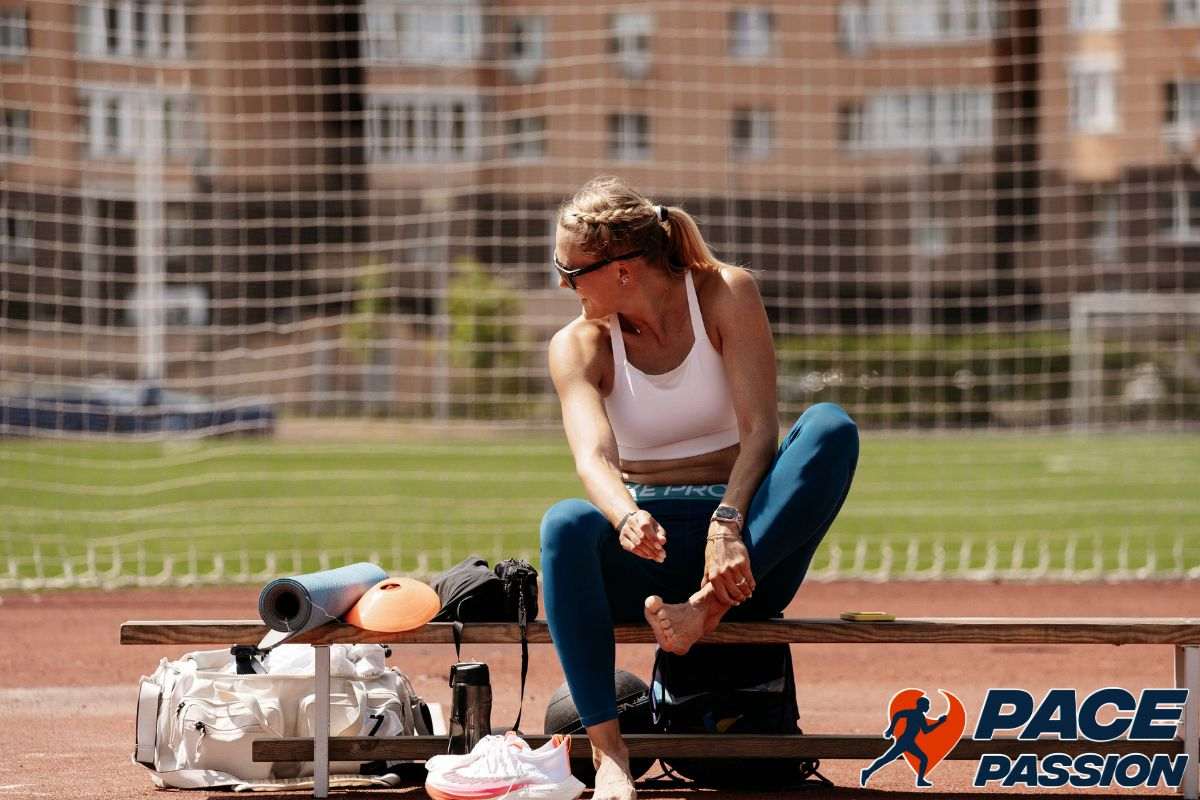
1. Address Calluses on Time
Untreated calluses can transform into corns, so keep your feet moisturized and address the calluses on time.

Pro Tip:
A good way to address calluses is to use exfoliating agents like pumice stone or foot scrub. Exfoliating your skin regularly removes dead skin cells and prevents calluses from becoming too thick.

Pro Tip:
A good way to address calluses is to use exfoliating agents like pumice stone or foot scrub. Exfoliating your skin regularly removes dead skin cells and prevents calluses from becoming too thick.
2. Socks Matter
Shoes are really important, but so are socks. Wear moisture-wicking socks that reduce friction and keep your feet dry. Damp skin is more prone to issues caused by friction, so invest in quality socks.
3. Custom Orthotics
Think about using custom orthotic inserts if you have specific foot structure issues or biomechanical imbalances. Customized support will evenly distribute the pressure, so you won’t get corns as easily.
4. Hygiene
Keep your feet dry and clean to minimize the risk of corns. Wash them regularly and dry them thoroughly (especially between the toes) to help prevent issues that are caused by moisture.
5. Padding
Gel and moleskine inserts can protect the areas of your feet that are prone to corns. They will reduce friction and pressure during running.
What We Recommend From Calluses for Runners?
If you’re suffering from calluses, there are ways of maintaining them. They have their good sides (like acting as a protective barrier), but you really need to make sure you at least maintain them. One of the best ways to do that is to keep your feet moisturized, and we have a fantastic cream to recommend.
1. Profoot Heel Rescue Foot Cream
Profoot Heel Rescue Foot Cream for Calloused or Chapped Skin
This cream has argan oil, which is extremely nourishing and you’ll see it in a lot of products meant for dry skin. This is a super concentrated formula that is able to penetrate deep into your skin, but it won’t leave a residue behind. It has no fragrance, so it’s great even for sensitive skin, and it’s not greasy at all. You’ll notice a difference right upon application because your skin will feel softer instantly.
But if you don’t want to use such a rich cream on your feet (even though you really should), there are other ways of helping your calluses, like wearing a cushion that will give your feet some extra padding.
2. ZenToes Callus Cushions
ZenToes Callus Cushions Padding with Water-Resistant
A callus cushion is a lifesaver if you’re experiencing discomfort or if you have blisters and hot spots on your feet. These cushions are made of soft foam and they protect your skin against rubbing, chafing, and friction. Just stick them on and you’re good to go! Another amazing thing about these is that they are made in the USA, by a small, woman-owned business that collaborates with Opportunities, Inc., a Community Rehabilitation Program. So not only are you helping your calluses, but you’re also contributing to a good cause.
A blister patch is another thing you can use if you want to take care of your blisters and maintain (even preventing) calluses. It acts like a barrier between the callus and your socks, so it helps with discomfort.
3. KT Health Blister Treatment Patch
KT Health Waterproof Bandage Blister Treatment Patch
KT’s Blister Treatment Patch creates a completely waterproof seal over your skin and they can even speed up the healing process (up to 2 times faster than traditional dry bandages!). They last up to 7 days, which means your skin is constantly protected, and you can stay active because you don’t need to worry about discomfort. The patches are hypoallergenic and have no latex or rubber, so even if your skin is sensitive, these won’t cause issues.
FAQ
Are Calluses Good Or Bad For Runners?
They can be good, but they can be bad. They give you a layer of natural protection against friction and pressure, but if you don’t maintain a callus, it can become painful, you can develop corns, and it can even alter your gait.
Do Calluses Have Benefits?
Yes, they act as a natural barrier that protects against friction and pressure. They are sort of like the skin’s shield and they can prevent blisters. But it’s important that you manage them, otherwise they will cause issues.
How To Prevent Calluses On Feet When Running?
There’s a good chance you’ll notice irritation from the callus between toes running long-distance, or just a patch of hardened skin that causes a bit of discomfort. To prevent it, wear shoes that fit you properly along with moisture-wicking socks. You should also inspect your feet on a regular basis, keep them moisturized, and address calluses if they appear.
Conclusion
Calluses and runners usually go hand in hand (or… foot in foot?). They’re not all bad so, if you notice a callus, don’t panic. If you treat it nicely, keep it clean and moisturize it, it can become your friend and protect you from friction and pressure. However, if you ignore it, it will get mad, and you can end up with corns, altered gait, and even pain and inflammation. Remember – a callus is as nice to you as you are to it.
How do you treat your calluses? Have you experienced any positive or negative impacts from them? How do you take care of your feet?
Leave any recommendations, tips, and questions in the comments.
I’m off to moisturize my feet!
References:
- Farina Hashmi, Christopher J. Nester, Ciaran R.F. Wright, Sharon Lam “The evaluation of three treatments for plantar callus: a three-armed randomised, comparative trial using biophysical outcome measures,” Trials 17 (2016): 251.
- George Grouios “Corns and calluses in athletes’ feet: a cause for concern,” The Foot 14, no. 4 (December 2004): 175-184.
- Mayo Clinic Staff “Corns and Calluses,” Mayo Clinic, https://www.mayoclinic.org/diseases-conditions/corns-and-calluses/diagnosis-treatment/drc-20355951 (accessed March 4th, 2024)
- Stacy Frye “Callus,” Britannica, https://www.britannica.com/science/callus-dermatology (accessed March 4th, 2024)
- Vanessa Ngan “Salicylic acid,” DermNet, https://dermnetnz.org/topics/salicylic-acid (accessed March 4th, 2024)
- All photos are made by PacePassion Media Team.
If you have any questions or suggestions, you can contact us via email – [email protected]

